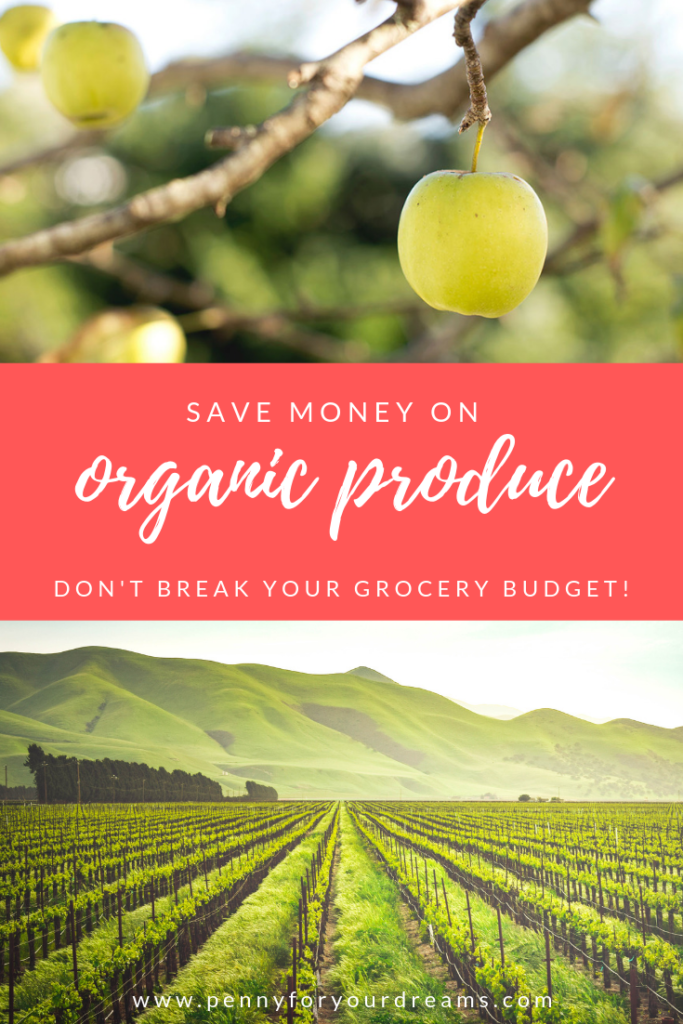
For a long time, I struggled to fit organic fruits and vegetables into my grocery budget. At first glance, they seemed like a luxury few could afford. But after some digging, I realized that there are actually quite a few ways to save money on organic produce!
Eating organic food eliminates the negative effects of toxic pesticides, herbicides, and fungicides. Plus, organic produce is richer in nutrients and in flavor!
I struggled with a debilitating chronic illness for several years. Through that experience, I learned firsthand the importance of eating nutrient-dense food—not only to heal, but to live with vitality.
As a family, we buy as much organic produce as we can, while still staying within our grocery budget.
We do buy some conventional produce, but we don’t stress about the possible negative effects. That’s not a healthy approach either!
I think it’s important to do the best you can with what you have—and not to worry about the rest.
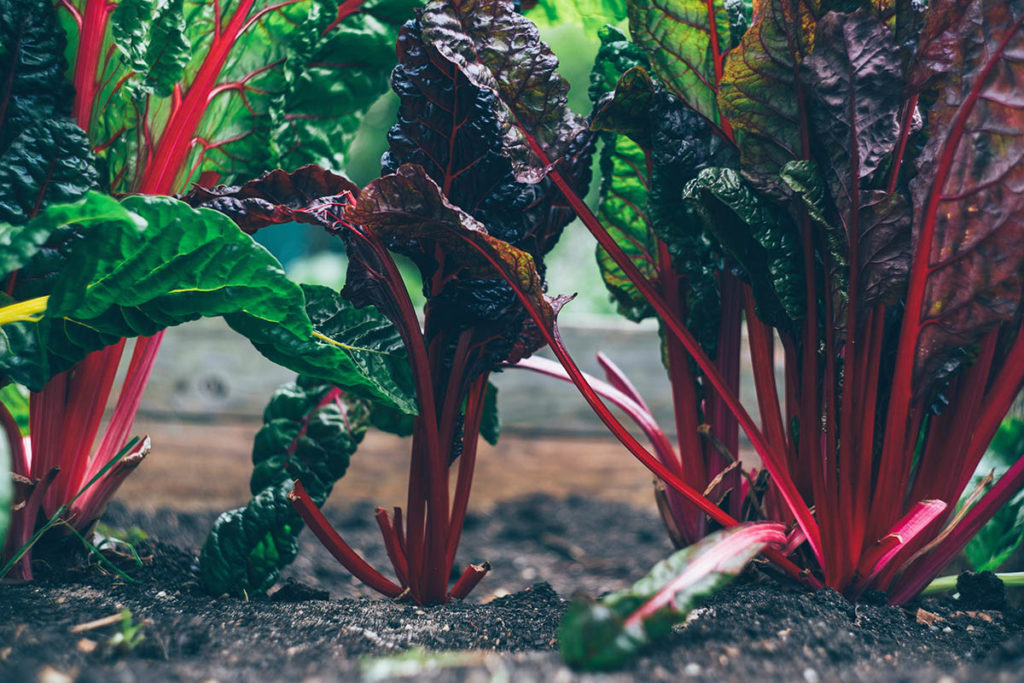
The Health Tradeoff
Our family of three (two adults and a 2-year-old) spends about $550 on groceries each month. We only dine out every couple of weeks, so that number includes almost all of our meals.
(We used to spend about 10% less, but we started having to pay sales tax on food when we moved to Alabama.)
While we certainly could spend less if we bought more conventionally grown food, we believe that the health tradeoff is worth the extra expense.
“Pay the farmer now, or the doctor later,” as the saying goes.
The hidden costs of buying non-organic produce are not well-known. While we do know that pesticides, herbicides, and fungicides can contribute to poor health, we don’t know the extent of the damage they can do.
Healthy food may cost more upfront, but hidden costs from eating processed and non-organic foods—such as low energy, digestive troubles, a toxic liver, doctor bills, etc.—can show up later.
It’s definitely something to consider!
5 Ways to Save Money on Organic Produce
If you’re having trouble fitting organic fruits and vegetables into your grocery budget, you may just need a new strategy.
Hopefully, some of these ideas will work for you and your family!
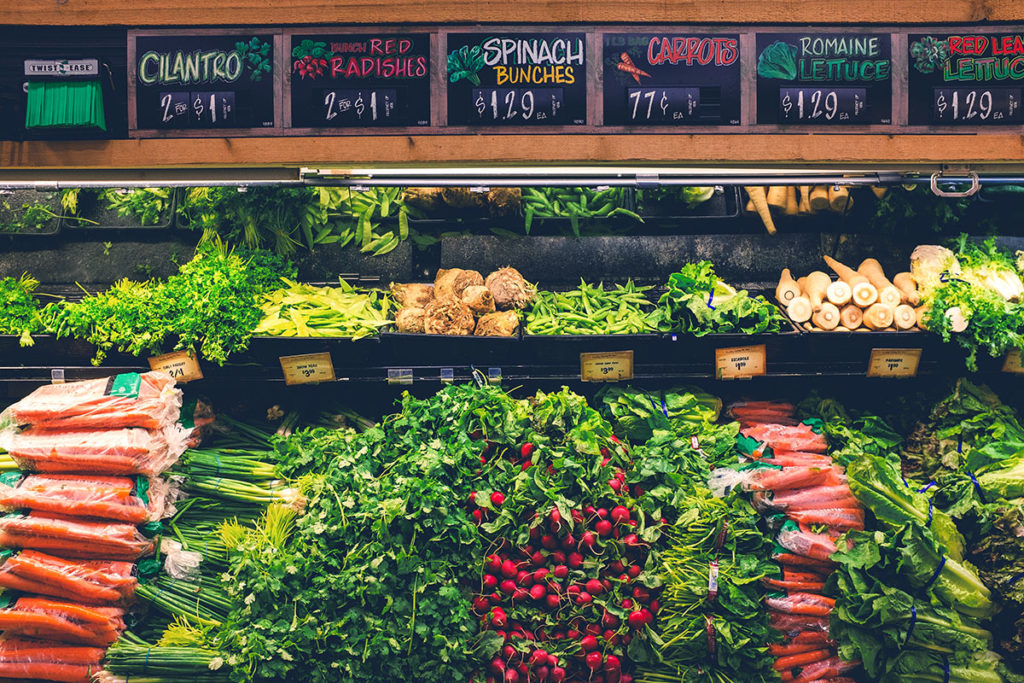
1. Meal Plan Around Sales
If you walk into the grocery store without a plan, buying organic fruits and vegetables can break your grocery budget!
Here’s the simple strategy I use that saves me the most money on organic produce.
Every week, I meal plan around the organic produce sales.
Before I get started, I browse the store ads to see which produce is on sale that week. For me, those stores are Sprouts and ALDI. (I also shop at Trader Joe’s, but they don’t run weekly specials.)
Once I know which organic fruits and vegetables are on sale, I start planning my meals around them.
Example: Organic eggplant was on sale last week, so I decided to make a Thai green curry one night.
If a more versatile ingredient is on sale, I try to use it at least twice that week—maybe even 3 times. As long as you vary the preparation, you can get away with using ingredients multiple times!
Example: Five-pound bags of organic carrots were on sale for $2.99 the other week, so I bought 2 bags. Throughout the week, we had roasted carrots as a side, sliced carrots in chicken soup, carrot ribbons in a salad, and even some carrot juice!
(Carrots last a while in the fridge, so I don’t mind stocking up.)
But how do you choose which produce to buy organic?
First off, I consider EWG’s “dirty dozen” and “clean fifteen” lists, which you’ve probably heard of. They’re a great place to start!
I also take pricing into consideration. Staying in my grocery budget is important to me!
If an organic vegetable is a lot more expensive than its conventional counterpart, I’ll pick the cheaper option.
For example, conventional asparagus is $1.99/lb. and organic asparagus is $3.99/lb. this week at Sprouts. I would definitely choose the conventional asparagus. It’s half the price and on the “clean fifteen” list, so that’s an easy decision for me.
However, when produce on the “dirty dozen” list is too expensive for me to buy organically, I’ll often choose not to buy it at all that week—and buy something else instead.
For example, conventional strawberries are $2.49/lb. and organic strawberries are $4.99/lb. this week at Sprouts. Strawberries are #1 on the dirty dozen list right now—and I’m definitely not paying $4.99/lb. for organic strawberries. So I’ll buy some organic oranges that are $.99/lb. instead!
When you’re flexible with meal planning, you can buy more organic produce for less!
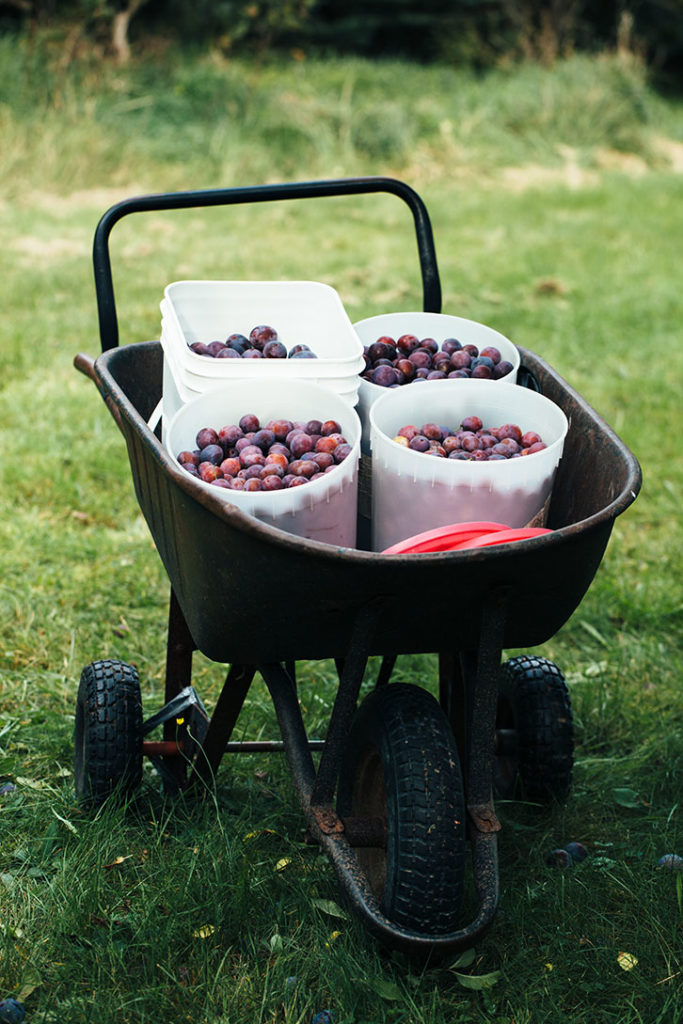
2. Buy Local
Buying from local farmers and gardeners is an excellent option!
Fruits and vegetables begin losing nutrients as soon as they are picked, so it’s fantastic when you can find produce that hasn’t been shipped over 2,000 miles.
Plus, you’re supporting local farmers and eating in-season produce!
Sometimes, you can find local family farms that grow organically, but aren’t “certified organic”. This can save you a lot of money because it’s very expensive for farmers to become “certified organic”.
Look for these types of farmers at local farmers’ markets, roadside stands, and farm stores. Farmers’ markets comprised of local growers are my favorite kind. A quick Google search will set you in the right direction if you’re not sure where to start.
Also look for U-pick farms in your area! Many of them don’t spray their crops.
We’ve done U-pick strawberries, raspberries, blueberries, blackberries, and apples in the past. It’s such a fun, enjoyable experience for the entire family—and a great way to get outside!
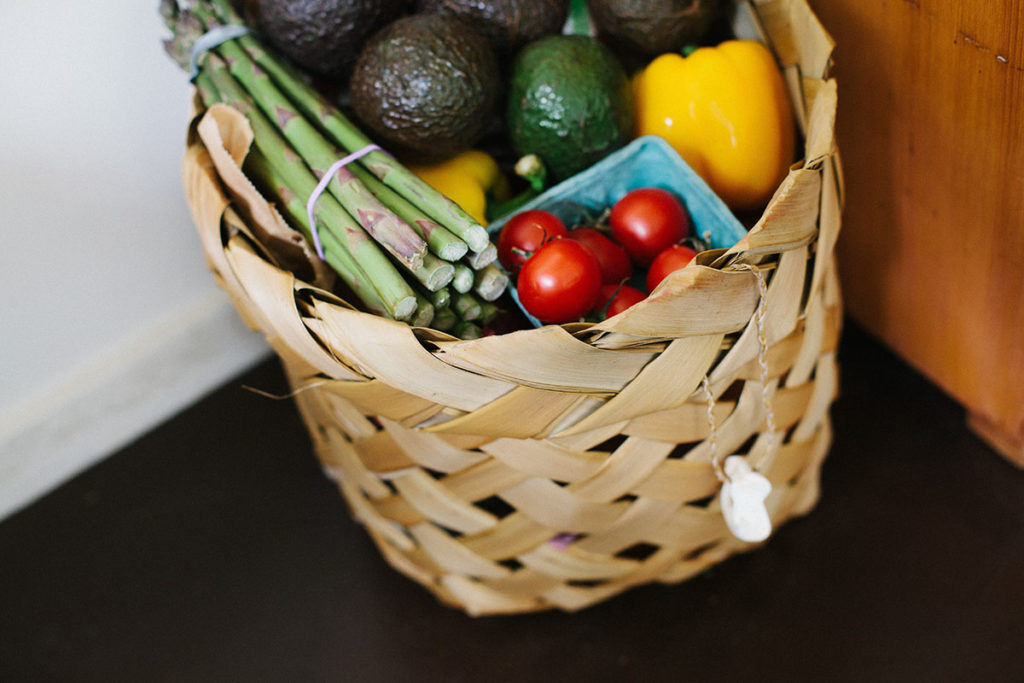
3. CSA Baskets
Community Supported Agriculture (CSA) is smart way to save money on organic produce. It takes buying local to another level!
With a CSA, you’re basically buying a farm share from a local farmer. Many CSA farmers grow organically, so it’s definitely worth looking into.
Here’s how it works.
Typically, you pay a fixed price at the beginning of a growing season and receive weekly baskets of produce in return. Sometimes, farmers will also include local honey, handmade cheeses, and fresh flowers into their shares!
Details such as pricing, which types of food are included, and how much food you will receive are known ahead of time.
What is unknown, however, is exactly what produce you’ll be getting from week to week. This can prove challenging at times.
Thus, there are both pros and cons of joining a CSA.
On the positive side, the food is fresh and local, you’re saving money by cutting out the middle-man, and you’re supporting sustainable agriculture. Plus, it’s a fun surprise seeing what’s in your basket each week!
On the flip side, you’re limited to what the farm puts into your basket, and there’s an upfront cost.
If vegetables like kohlrabi and purple potatoes make you nervous, you might want to find a different option. But if you’re more adventurous and enjoy cooking with a wide variety of produce, joining a CSA could be a great experience!
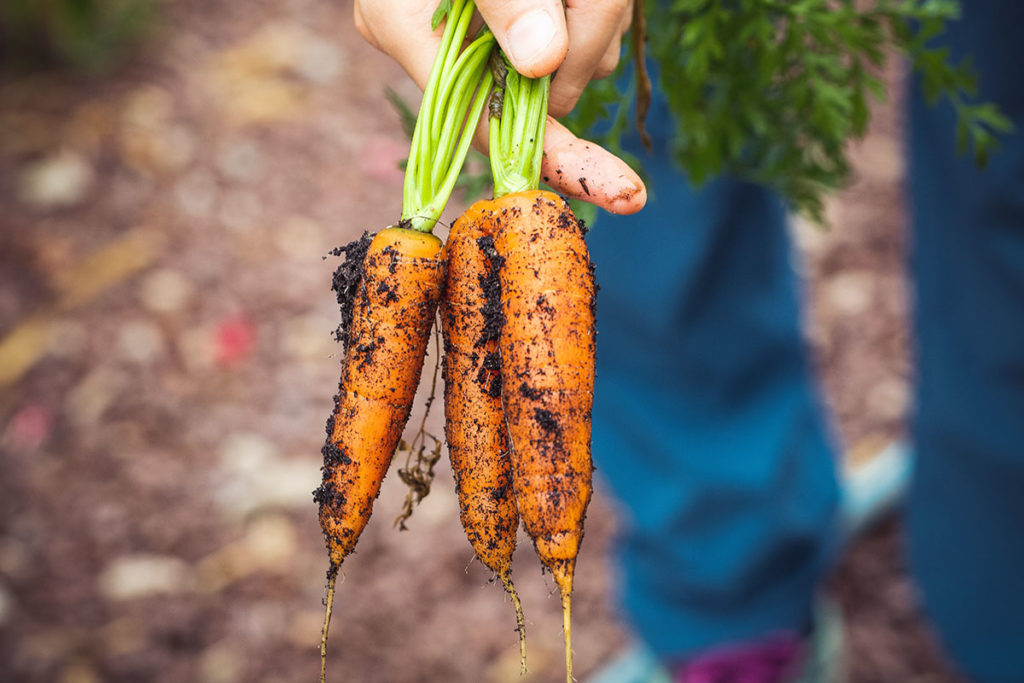
4. The Kitchen Garden
Growing your own food can save you hundreds of dollars on organic produce! Starting from seed is the most economical method, but seedlings are also a great option.
Choose fruits and vegetables that you eat regularly and are more expensive to buy organically. Tomatoes and bell peppers are good examples of vegetables that are easy to grow, yet expensive to buy organically.
During the years we lived in an apartment, all we had was a concrete patio to work with. The space was small, so we weren’t able to grow much, but our potted herb garden thrived!
Growing your own herbs can save you so much money if you’re used to buying packages of fresh herbs at the grocery store! You can often purchase an entire plant for what a few clippings cost.
They’re a great investment.
Cooking with fresh herbs takes your food to a whole new level, and lends great depth of flavor!
(Trader Joe’s currently has organic potted herb plants for just $1.99 each! Can’t beat that!)
Although gardening is more work than shopping, it offers some awesome health benefits, such as vitamin D from the sunshine, exercise, and stress-relief.
Plus, it’s a wonderful way to get your kids out of the house and into the fresh air.

5. Curb the Snacking
If you’re trying to fit more organic fruits and vegetables into your budget, try prioritizing them by purchasing fewer prepackaged snacks.
Some of the money we previously spent on snack foods now goes toward buying nutrient-dense, organic food instead.
Prepackaged snacks can add up quickly, and typically don’t add much nutrition to your diet. Also, frequent snacking is unhealthy because our bodies need time to digest and rest between meals.
As a family, we’ve been working on eating three hearty, balanced meals a day—complete with healthy fats and protein—so we’ll be less likely to feel hungry shortly after eating.
A well-timed, late-afternoon snack is typically all we need. Well, that and dessert. Because let’s be real—I’m never giving up dessert!
Even our toddler does great with this! I reserve snacks for two occasions: after his afternoon nap, and during certain times when we’re out and about (e.g. running errands, the sermon at church, long card rides, etc.).
Jack eats well at mealtimes because he knows that snacks aren’t readily available—and because he’s actually hungry by the time food is served!
When you do snack, opt for foods like fresh fruits and vegetables, hummus, nuts and nut butters, smoothies, and homemade muffins and treats!
They’ll give you more bang for your buck by keeping you satiated and nourished far better than a bag of chips ever could.
Start Small to Save Money on Organic Produce
If you’re just starting to buy organic produce and having trouble making it work with your grocery budget, start small.
Buy a few organic vegetables each week and go from there. It’s a journey, and not always a straightforward one!
Hopefully, at least a few of these ideas will help you get started.
Thankfully, sustainable agriculture is making a comeback in a big way! We can help the organic movement grow and flourish by being conscientious and supporting our local farmers.
I’m grateful that there are so many different ways to save money on organic produce—even though it’s not always as economical as I wish it was.
What are your favorite ways to save money on organic produce and fit it into your grocery budget?












Love tip #5! Something I’m currently working on – saying “no” to anything that is second best, and just keeping it out of our home (I make a few exceptions, like pretzels for car rides, and Annie’s mac and cheese for when I really need it). The problem is that processed food really is less expensive and much easier to prepare, so it can be tempting to give in!
Yes, for sure! And sales and coupons are frequently run for the less healthy foods, which makes buying them even more tempting! 😉